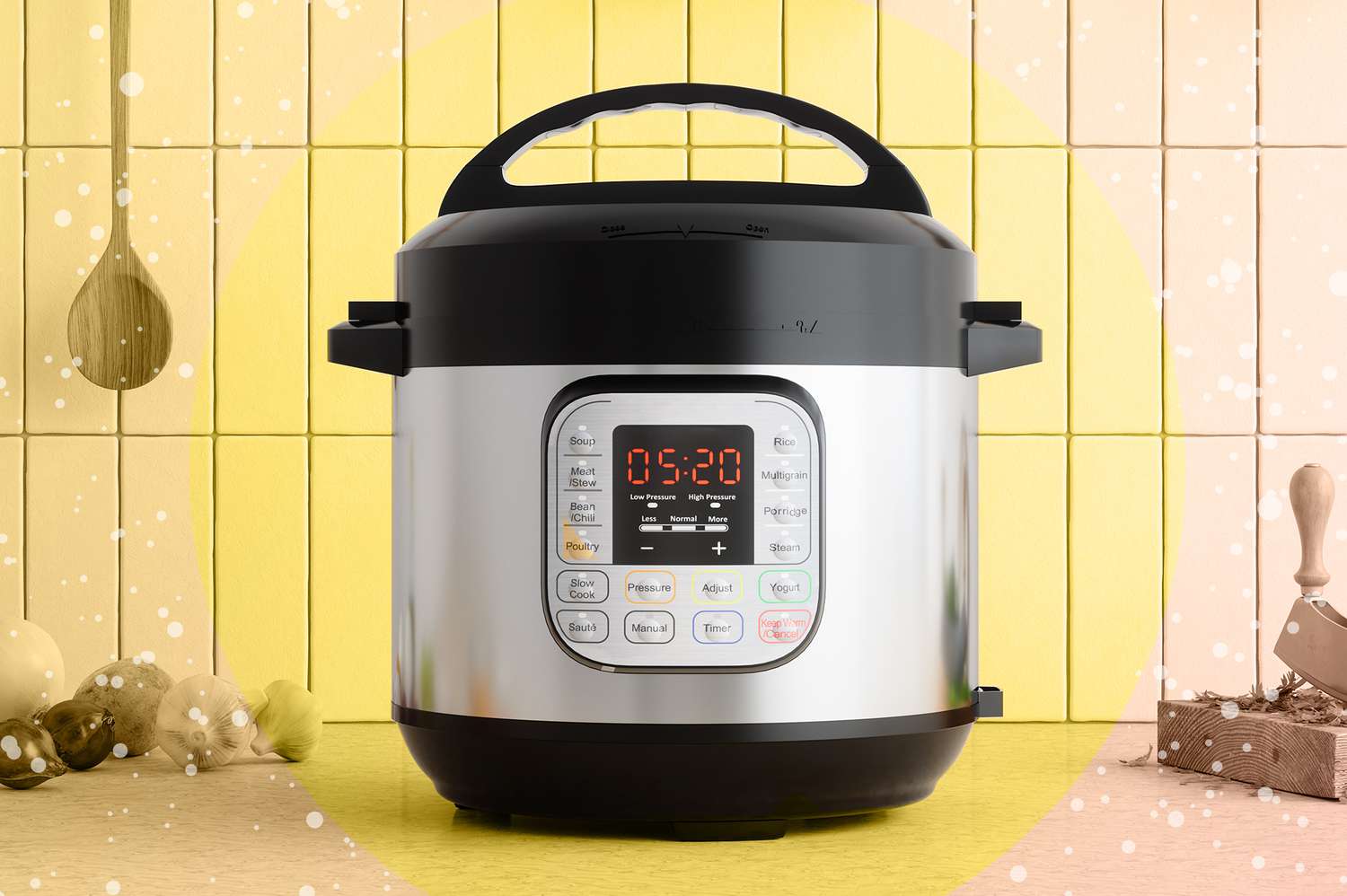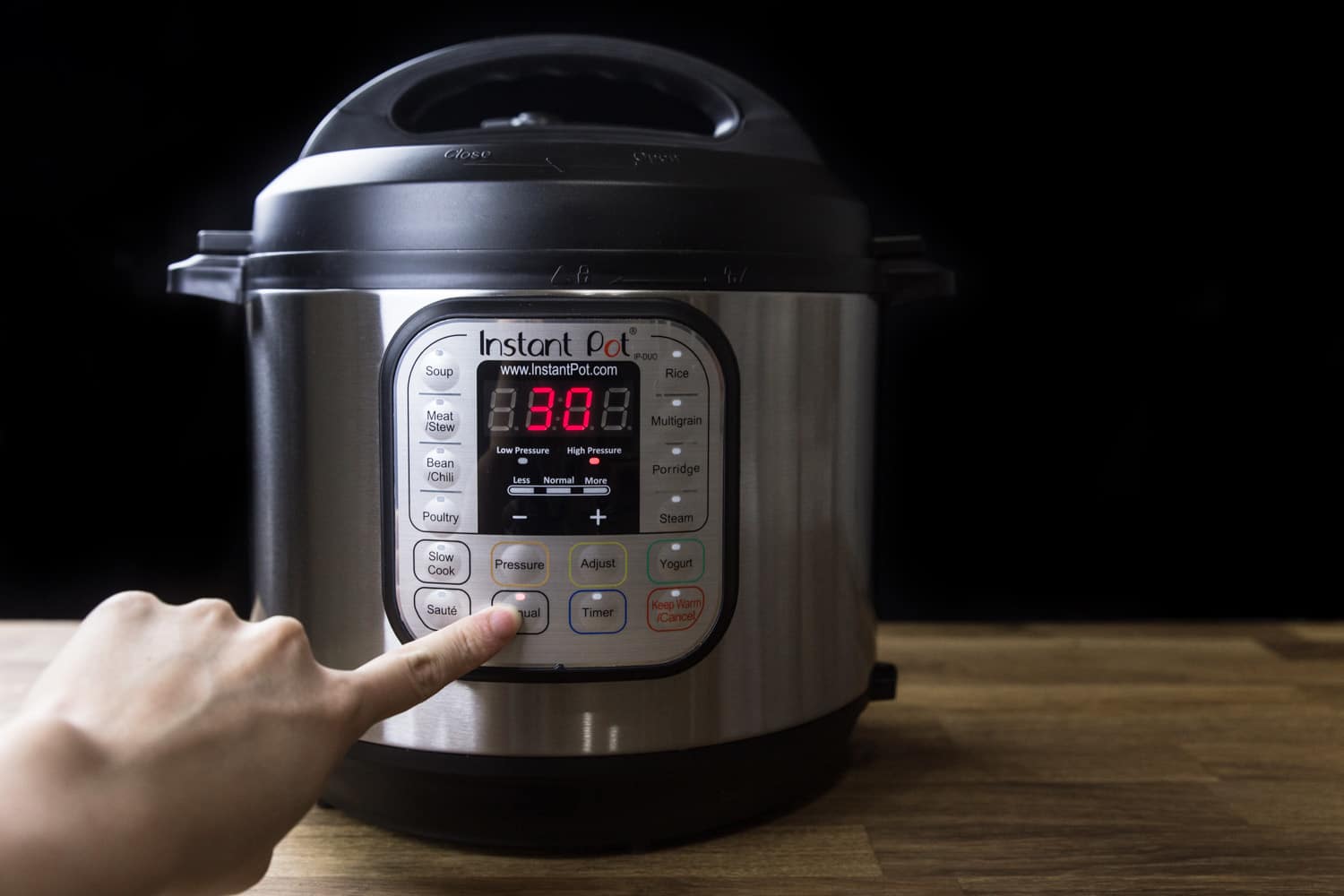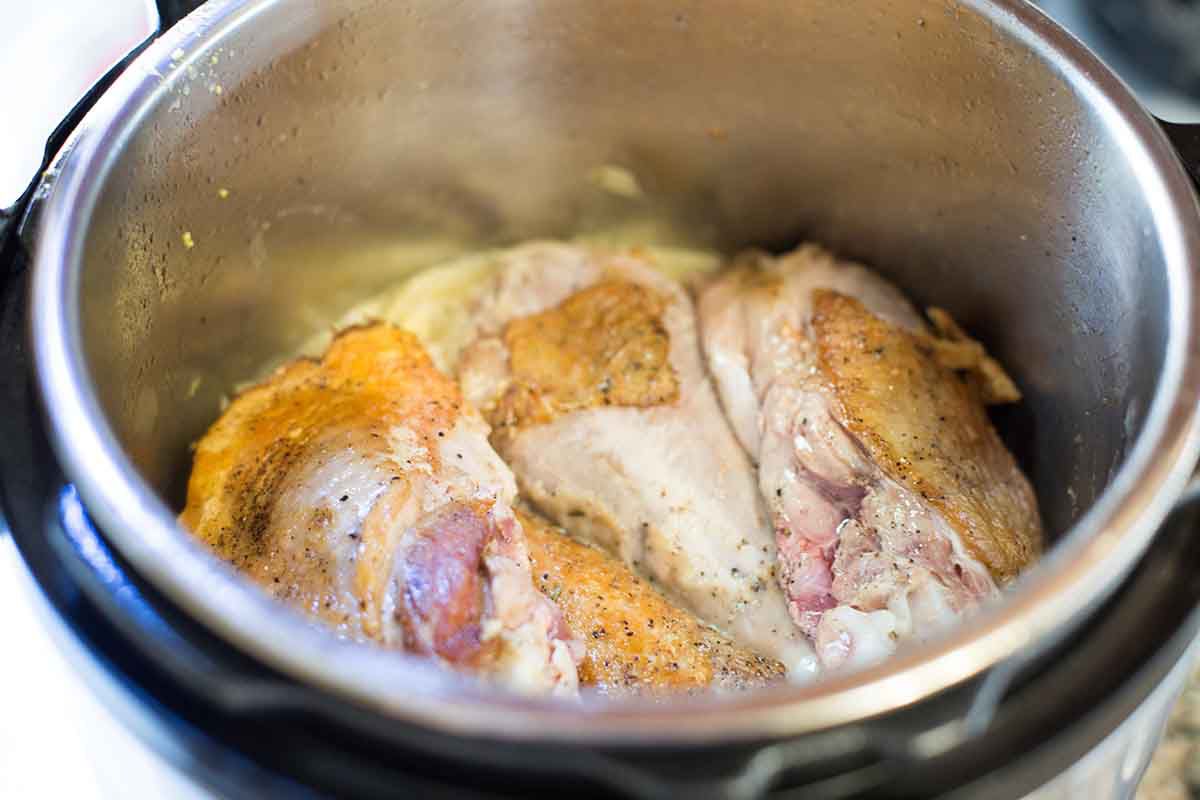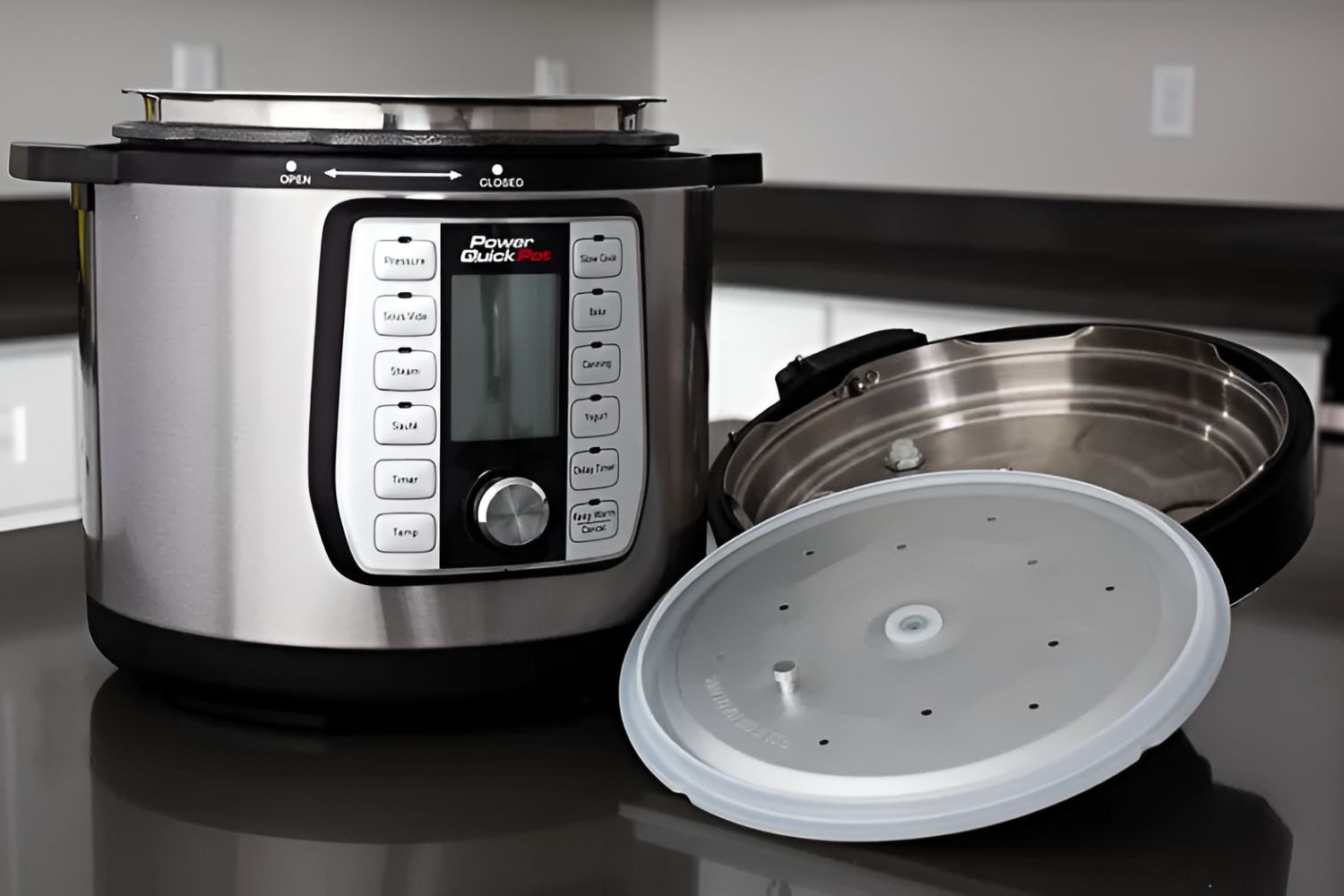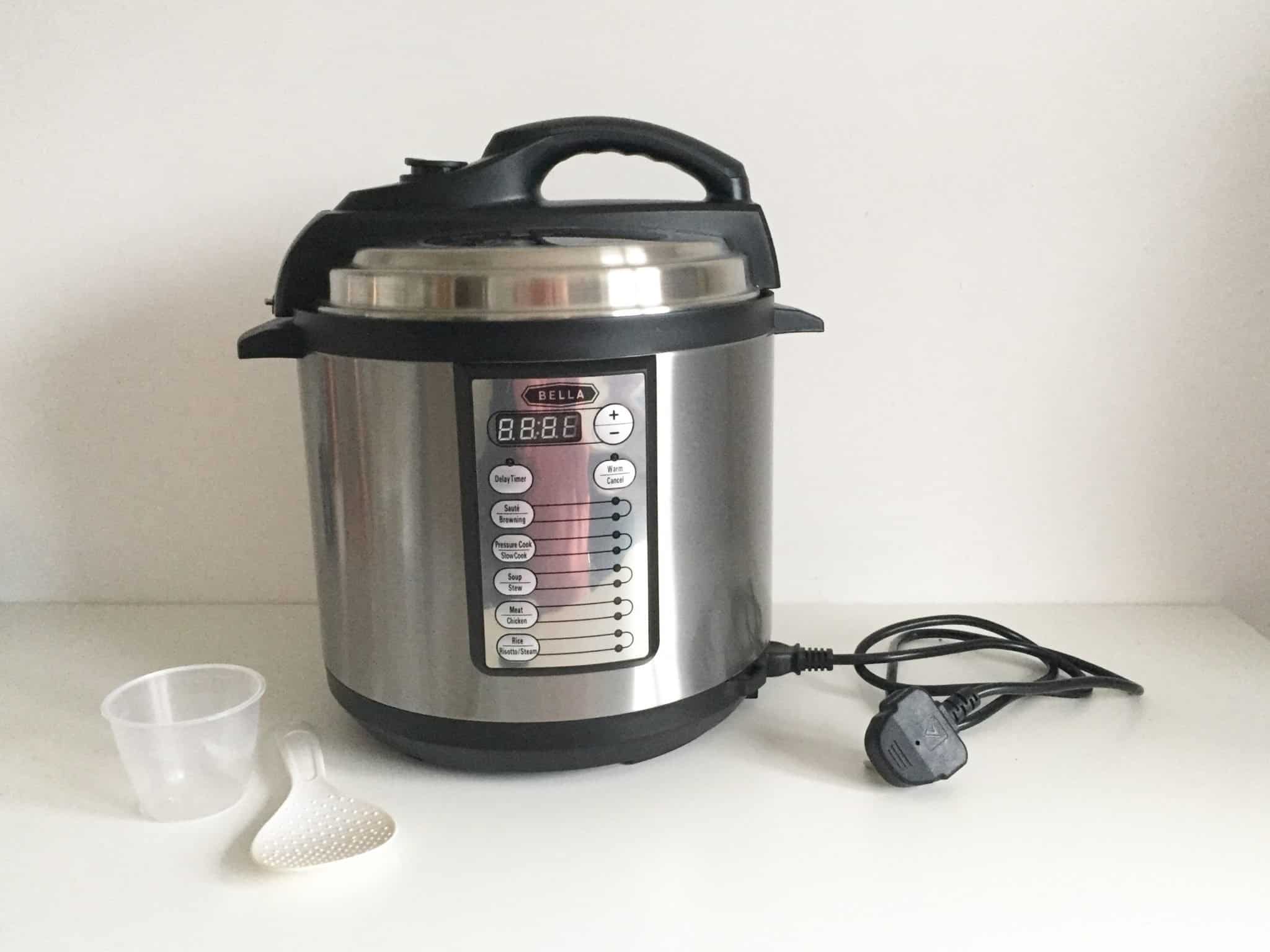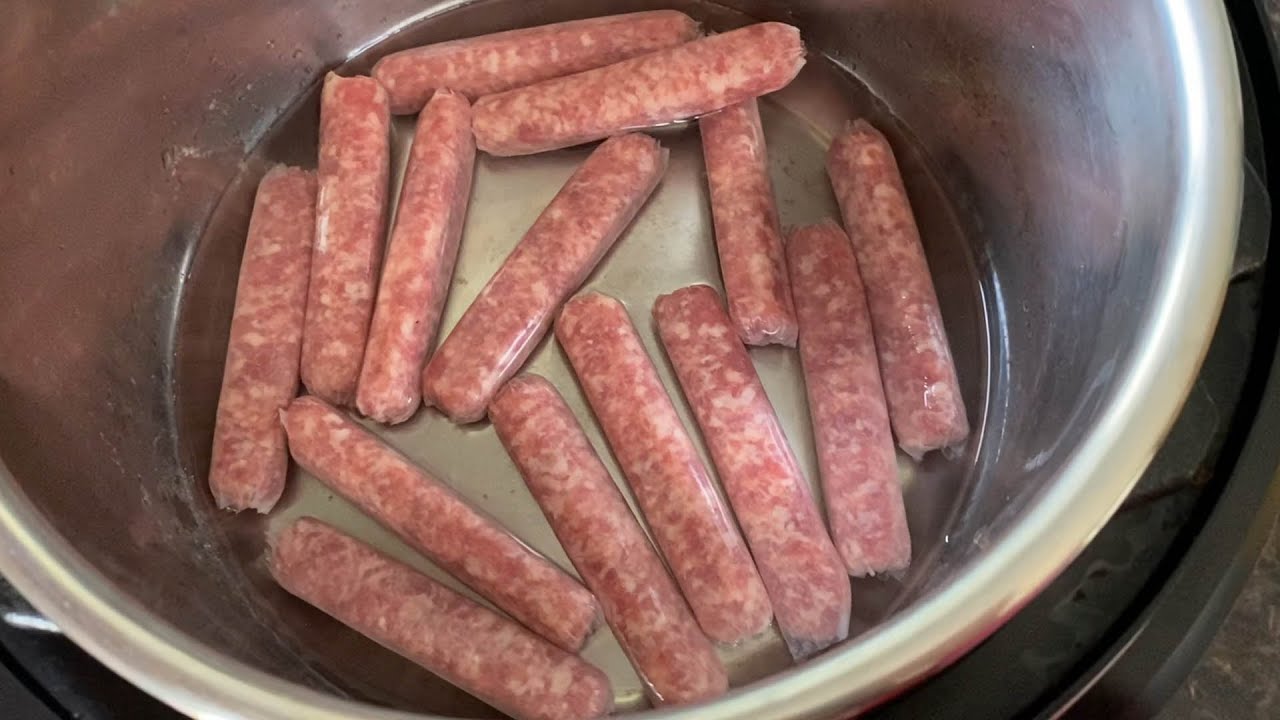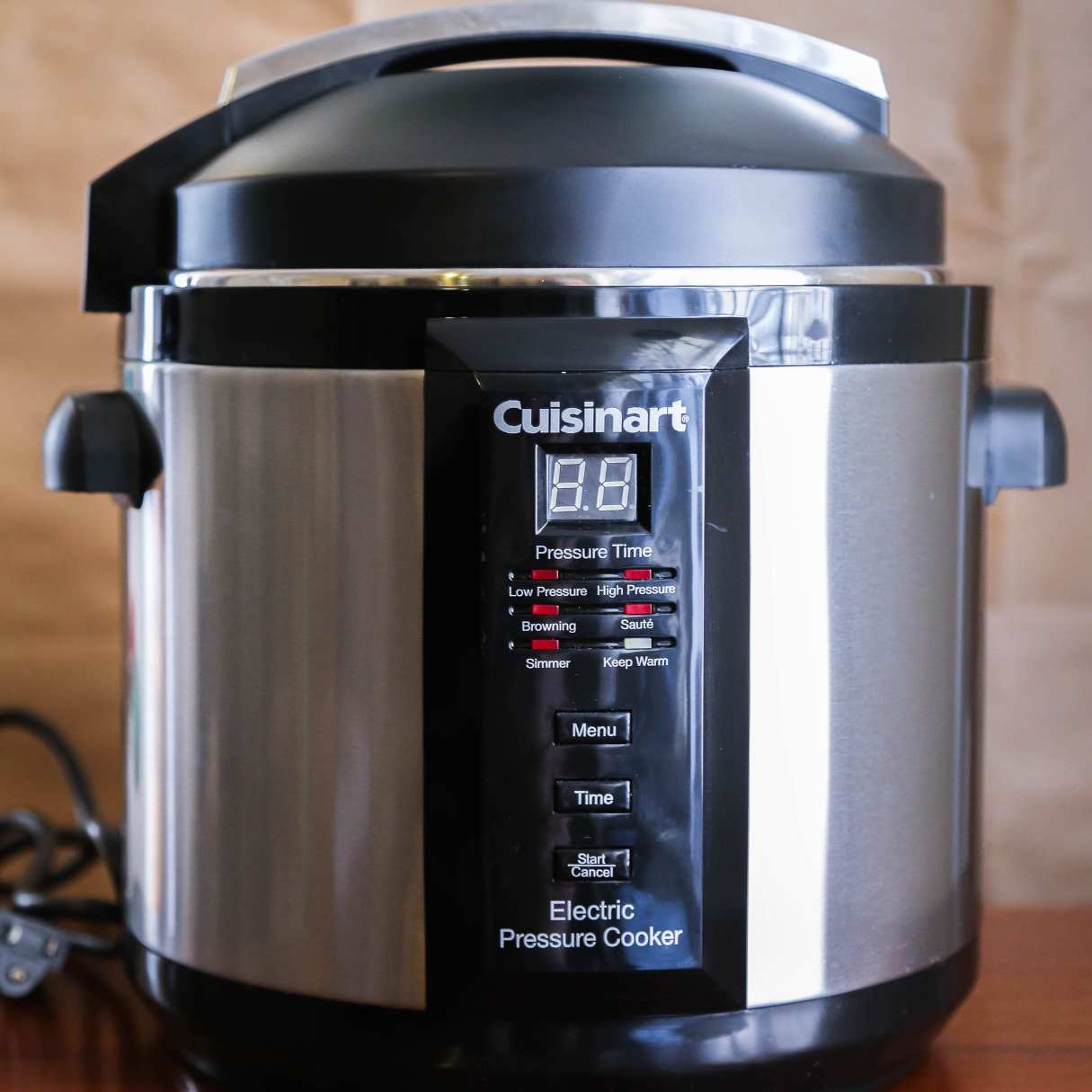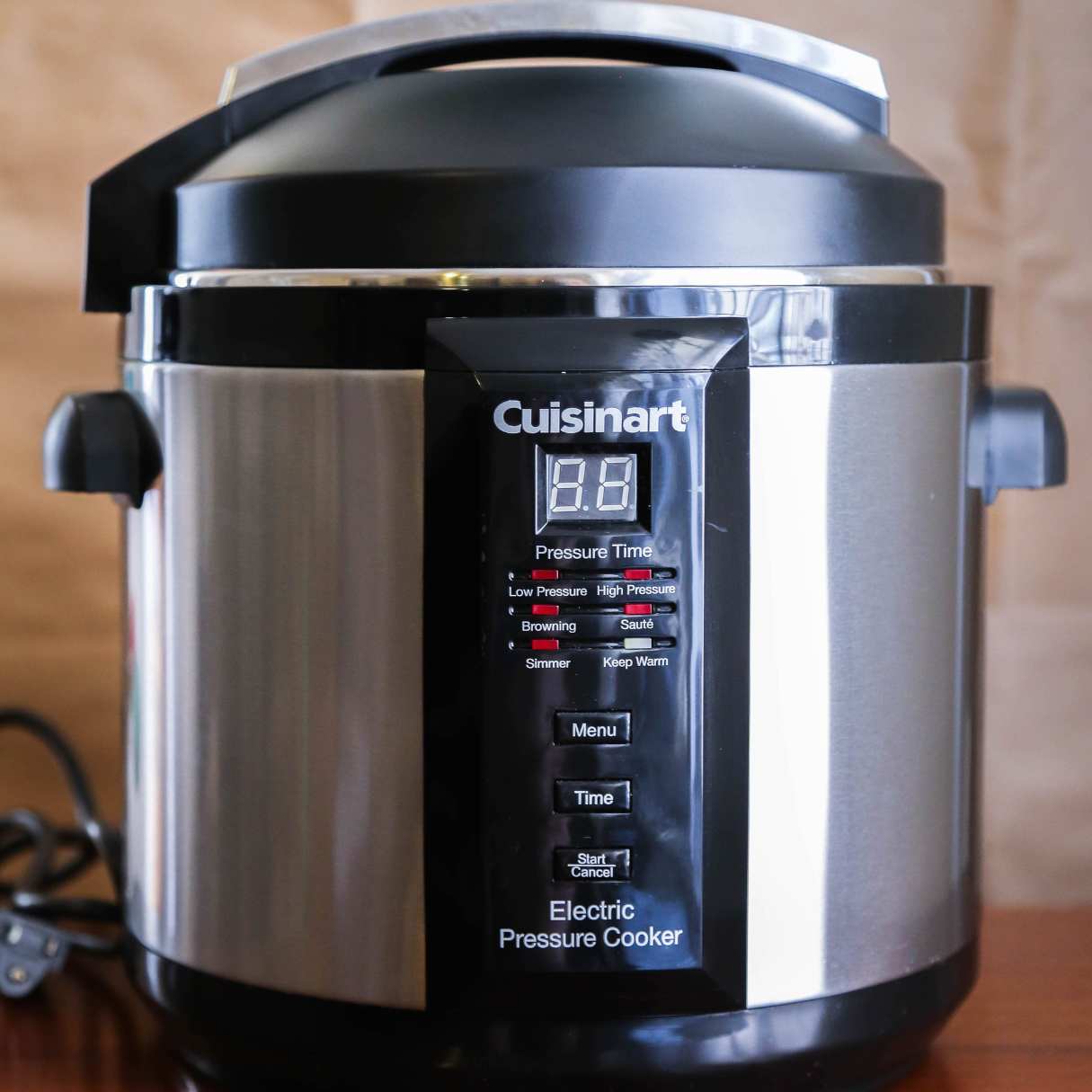Introduction
Welcome to the world of electric pressure cooking! This versatile kitchen appliance has revolutionized the way we prepare meals, making it easier and more efficient than ever before. With its ability to cook food quickly and retain nutrients and flavors, the electric pressure cooker has become a must-have for home cooks of all levels of experience.
In this guide, we will explore the benefits of using an electric pressure cooker, how to choose the right one for your needs, and provide you with essential tips and techniques to make the most out of your pressure cooking journey.
Whether you’re a busy professional looking for a time-saving cooking method, a beginner just starting out in the kitchen, or a seasoned chef seeking to expand your culinary repertoire, the electric pressure cooker is an invaluable tool that will streamline your cooking process and open up a world of delicious possibilities.
So why choose an electric pressure cooker over traditional cooking methods? One of the biggest advantages is its ability to significantly reduce cooking time. With the use of steam and high pressure, an electric pressure cooker can cook food up to 70% faster than conventional methods. This means you can have a tender and flavorful meal on the table in a fraction of the time it would take with other cooking methods.
Additionally, the electric pressure cooker is incredibly versatile. It can handle a wide range of ingredients, from meats and poultry to vegetables, grains, and even desserts. With multiple cooking functions, including sautéing, slow cooking, and steaming, you have the flexibility to create a variety of dishes with just one appliance. Say goodbye to cluttered countertops filled with different pots and pans!
Another benefit of using an electric pressure cooker is its ability to retain nutrients in your food. Since the cooking time is reduced, vitamins and minerals are preserved, resulting in healthier meals for you and your family. The sealed cooking environment also helps to lock in flavors, ensuring that every bite is packed with deliciousness.
At the heart of successful pressure cooking is choosing the right electric pressure cooker for your needs. In the next section, we will explore the key factors to consider when selecting the perfect model.
Benefits of Using an Electric Pressure Cooker
Using an electric pressure cooker brings many advantages to your cooking experience, making it a popular choice in kitchens around the world. Whether you are a seasoned chef or a novice in the culinary world, the benefits will truly transform the way you prepare meals.
1. Time Efficiency: One of the primary advantages of using an electric pressure cooker is its ability to cook food in a significantly shorter time compared to traditional methods. The combination of heat and pressure speeds up the cooking process, allowing you to prepare meals in a fraction of the time it would take with conventional cooking methods. This is especially beneficial for busy individuals or families looking to enjoy home-cooked meals without spending excessive time in the kitchen.
2. Enhanced Flavor and Nutrients: The sealed and pressurized cooking environment of an electric pressure cooker helps to lock in flavors and retain the natural nutrients in your food. It preserves the integrity of ingredients, resulting in tender and flavorful dishes. The high heat and steam facilitate the breakdown of tough proteins, resulting in succulent meats and vegetables that are both delicious and nutritious.
3. Energy Efficiency: Electric pressure cookers are designed to use less energy compared to other cooking appliances. The shorter cooking time and the ability to cook at lower temperatures contribute to reduced energy consumption. This not only benefits the environment but also helps to save on your utility bills.
4. Versatility: Electric pressure cookers are incredibly versatile. They can be used for a wide range of cooking techniques, including sautéing, slow cooking, steaming, and even yogurt making. From soups and stews to rice and beans, the electric pressure cooker can handle a variety of dishes with ease. Its versatility eliminates the need for multiple appliances, freeing up valuable kitchen space.
5. Convenience and Ease of Use: Electric pressure cookers are designed for convenience and ease of use. They often come with pre-programmed cooking functions and intuitive control panels, making it simple to select the desired cooking settings. Once the ingredients are added, the cooker takes care of the rest, allowing you to focus on other tasks or relax until your meal is ready.
6. Safety: Modern electric pressure cookers come equipped with safety features that ensure worry-free cooking. These features include pressure release valves, locking lids, and automatic shut-off systems. With proper usage and following the manufacturer’s instructions, electric pressure cookers offer a safe cooking experience.
These are just a few of the many benefits of using an electric pressure cooker. By incorporating this versatile appliance into your kitchen, you can elevate your cooking game and enjoy delicious meals with maximum convenience and efficiency.
Choosing the Right Electric Pressure Cooker
When it comes to selecting the right electric pressure cooker for your needs, there are several factors to consider. With numerous models available in the market, understanding these factors will help you make an informed decision and choose the cooker that best suits your cooking style and requirements.
1. Size and Capacity: Electric pressure cookers come in various sizes, typically ranging from 4 to 8 quarts. Consider the size of your household and the amount of food you usually cook. If you often cook for a large family or enjoy meal prepping, a larger capacity cooker might be more suitable. However, if you have limited kitchen space or cook in smaller portions, a smaller capacity cooker may be sufficient.
2. Pressure Settings: Different recipes may require different pressure settings. Look for a pressure cooker that offers adjustable pressure settings, such as low, medium, and high. This gives you the flexibility to customize the cooking pressure based on the recipe you are preparing.
3. Safety Features: Safety should be a top priority when selecting an electric pressure cooker. Look for models with safety features such as pressure release valves, locking lids, and lid indicators to ensure safe operation. Additionally, check if the cooker has passed safety certifications from reputable organizations.
4. Cooking Functions: Consider the cooking functions that the electric pressure cooker offers. While pressure cooking is the main feature, many models come with additional functions such as slow cooking, sautéing, and steaming. Having these versatile cooking functions can expand your culinary capabilities and provide more convenience in the kitchen.
5. Control Panel and User Interface: A user-friendly control panel and intuitive user interface make operating the electric pressure cooker much easier. Look for cookers with clear and easy-to-read displays, responsive buttons, and pre-programmed settings. This will ensure a seamless cooking experience, even for beginners.
6. Build Quality: Consider the build quality and durability of the cooker. Look for cookers made from high-quality materials that can withstand the rigors of pressure cooking. Stainless steel cookers are a popular choice due to their durability and heat distribution properties.
7. Additional Accessories: Some electric pressure cookers come with extra accessories such as steamer racks, trivets, or additional cooking pots. These accessories can enhance the versatility of the cooker and provide more cooking options. Consider if these accessories add value to your cooking needs.
By considering these factors, you can select the electric pressure cooker that best suits your culinary requirements, ensuring an enjoyable and efficient cooking experience in your kitchen.
Getting Started
Now that you have chosen the perfect electric pressure cooker for your culinary adventures, it’s time to get started! Familiarizing yourself with the basic operations and understanding how to use the cooker correctly is essential for successful pressure cooking.
1. Read the Instruction Manual: Before using your new electric pressure cooker, take the time to read the instruction manual thoroughly. Each electric pressure cooker model may have specific features and operating instructions, so make sure you understand how to use your specific cooker for optimal results.
2. Perform the Initial Test Run: It is recommended to perform an initial test run with water before using the cooker to cook food. This helps you become familiar with the cooker’s functions and ensures it is in proper working condition.
3. Prepare the Ingredients: Prepare your ingredients by washing, chopping, and measuring them according to the recipe you will be using. Prepping your ingredients in advance will save you time during the cooking process and ensure a smooth cooking experience.
4. Ensure Proper Sealing: Before starting the cooking process, ensure that the sealing ring and the inner pot are properly in place. A secure seal is vital to maintaining pressure and preventing steam from escaping during cooking.
5. Add Sufficient Liquid: Most pressure cooker recipes require the addition of a certain amount of liquid to create steam and build pressure. Follow the recipe guidelines for the correct amount of liquid to ensure proper cooking results.
6. Select the Cooking Function: Depending on the recipe you are preparing, select the appropriate cooking function on the control panel of your electric pressure cooker. Different recipes may require different cooking modes such as pressure cooking, slow cooking, or sautéing.
7. Set the Cooking Time: Once you have selected the cooking function, set the desired cooking time. Refer to your recipe for the recommended cooking time, or adjust based on your preferences and the nature of the ingredients being cooked.
8. Start the Cooking Process: Once all the settings are in place, press the start button to begin the cooking process. The cooker will take some time to reach the desired pressure before the countdown timer starts.
9. Follow Recipe Guidelines: It is essential to follow the recipe guidelines for pressure cooking, including the recommended release method (quick-release or natural release) and any additional steps or instructions specific to the recipe.
10. Release Pressure Safely: After the cooking process is complete, release the pressure according to the recipe guidelines. Always follow the recommended pressure release method to ensure safety and prevent scalding.
By following these steps and getting acquainted with your electric pressure cooker, you’ll be well on your way to enjoying flavorful and perfectly cooked meals in no time.
Understanding Pressure Cooking
Pressure cooking is a cooking technique that utilizes steam and high pressure to cook food quickly and efficiently. It is one of the primary features of electric pressure cookers and is essential to achieving tender and flavorful results in a fraction of the time compared to traditional cooking methods.
How does pressure cooking work?
In a pressure cooker, water or liquid is added to create steam. As the liquid heats up, it begins to produce steam, which increases the pressure inside the cooker. This elevated pressure raises the boiling point of the liquid, which results in faster cooking times.
When the pressure cooker reaches the desired pressure level, a valve controls the release of excess steam to maintain a stable pressure. The trapped steam continues to circulate inside the tightly sealed cooker, transferring heat and tenderizing the food quickly.
The Benefits of Pressure Cooking:
There are several benefits to using pressure cooking as a cooking method:
1. Speed: Pressure cooking significantly reduces cooking time compared to traditional methods. It can cook food up to 70% faster by utilizing steam and high pressure.
2. Retains Nutrients: Pressure cooking helps in retaining the nutrients in food, as the shorter cooking time preserves vitamins and minerals that can be lost in longer cooking processes.
3. Enhances Flavor: The sealed and pressurized environment of the cooker helps retain the natural flavors of ingredients, resulting in rich and flavorful dishes.
4. Versatility: Pressure cookers can handle a wide range of ingredients, from meats and poultry to vegetables, grains, and even desserts. This versatility allows for a variety of dishes to be prepared using the same appliance.
5. Energy Efficiency: Pressure cookers are designed to be energy-efficient. The shorter cooking time and the ability to cook at lower temperatures contribute to reduced energy consumption compared to other cooking methods.
6. Tenderizes Tough Cuts of Meat: The high pressure and steam in a pressure cooker help break down tough proteins, resulting in tender and succulent meat that would typically require extensive cooking time in other methods.
Understanding pressure cooking techniques and the benefits they offer will empower you to make the most out of your electric pressure cooker and create delicious meals in a fraction of the time.
Proper Handling and Safety Tips
Using an electric pressure cooker is generally safe when proper handling and safety measures are followed. It’s important to prioritize safety to prevent accidents and ensure a smooth cooking experience. Here are some essential handling and safety tips for using an electric pressure cooker:
1. Read the Instruction Manual: Familiarize yourself with the instructions and safety guidelines provided by the manufacturer. Each electric pressure cooker may have specific features and recommended usage, so understanding the manual is crucial for safe operation.
2. Check the Sealing Ring: Before every use, ensure that the sealing ring is in good condition and properly seated in the lid. A damaged or incorrectly installed sealing ring can affect the cooker’s performance and safety.
3. Avoid Overfilling: Do not overfill the cooker with ingredients and liquid. Follow the recommended maximum fill line indicated in the inner pot. Overfilling can lead to clogging of the release valve or cause liquid to spew out during cooking.
4. Venting and Pressure Release: Always follow the proper venting and pressure release procedures outlined in the instruction manual. Improper release of pressure can result in burns from steam or cause sudden eruptions of hot liquid.
5. Use Proper Utensils: When handling the electric pressure cooker, use utensils made of non-abrasive materials to avoid scratching the inner pot or damaging the sealing ring. Metal utensils can damage the non-stick coating and compromise the performance of the cooker.
6. Keep the Area Clear: Ensure that the area surrounding the electric pressure cooker is clean and free from any obstructions. This prevents accidents and provides a safe cooking environment.
7. Maintain and Clean Regularly: Regularly clean the sealing ring, inner pot, and lid according to the manufacturer’s instructions. Proper maintenance helps prolong the lifespan of the cooker and ensures its optimal performance.
8. Follow Recipe Guidelines: Follow recipe guidelines and cooking times to avoid overcooking or undercooking meals. Properly cooking food not only ensures taste and texture but also eliminates the risk of consuming undercooked ingredients.
9. Do Not Leave Unattended: Avoid leaving the electric pressure cooker unattended during the cooking process. While the cooker is designed for safe operation, it’s always best to closely monitor the cooking process.
10. Handle with Care: When opening the cooker after cooking, ensure that your hands and arms are protected by oven mitts or heat-resistant gloves to prevent burns from the hot steam and food.
By following these handling and safety tips, you can enjoy the convenience and benefits of using an electric pressure cooker while ensuring a safe and enjoyable cooking experience.
Using the Control Panel
The control panel of an electric pressure cooker is the central hub that allows you to adjust settings, select cooking functions, and set the cooking time. Understanding how to use the control panel correctly is essential for efficient and successful pressure cooking. Here’s a step-by-step guide on using the control panel of your electric pressure cooker:
1. Power On: Plug in the electric pressure cooker and press the power button to turn it on. The control panel will light up, indicating that the cooker is ready for use.
2. Select Cooking Function: Most electric pressure cookers have multiple cooking functions, such as pressure cooking, slow cooking, sautéing, and steaming. Use the function buttons on the control panel to select the desired cooking mode based on your recipe.
3. Adjust Pressure: Depending on the recipe requirements, you may need to adjust the pressure level. Some models have pressure adjustment buttons that allow you to toggle between low, medium, and high pressure settings.
4. Set Cooking Time: Once the cooking function and pressure are selected, use the time adjustment buttons to set the cooking time. Refer to the recipe guidelines for the recommended cooking time or adjust it based on your preferences.
5. Delay Start: If your electric pressure cooker has a delay start feature, you can set a specific time for the cooking process to begin. This is useful when you want to have a meal ready at a specific time or when using the slow cooking function.
6. Start Cooking: When all the desired settings are in place, press the start or cook button to begin the cooking process. The cooker will take some time to reach the desired pressure before the countdown timer starts.
7. Monitor Cooking Progress: While the cooker is in operation, you can monitor the cooking progress on the control panel. Some models have a display that shows the cooking time remaining, while others may have indicator lights to indicate the cooking stages.
8. Cancel or Pause: If you need to cancel or pause the cooking process, many electric pressure cookers have a cancel or stop button. This will halt the cooking process and depressurize the cooker, allowing you to make any necessary adjustments or cancel the cooking completely.
9. Keep Warm: After the cooking process is complete, some electric pressure cookers automatically switch to a keep warm mode. This feature keeps the food warm until you’re ready to serve without overcooking it.
10. Power Off: Once you’re finished using the electric pressure cooker, press the power button to turn it off. This will ensure that the cooker is safely powered down and ready to be cleaned and stored.
Familiarizing yourself with the control panel options and functionalities of your specific electric pressure cooker will allow you to take full advantage of the features and create delicious meals with ease.
Filling the Pot with Ingredients and Liquid
Filling the pot of your electric pressure cooker with the right amount of ingredients and liquid is crucial for successful pressure cooking. Properly measuring and selecting the right ingredients, as well as ensuring sufficient liquid, will help you achieve delicious and well-cooked meals. Here are some essential guidelines for filling the pot of your electric pressure cooker:
1. Follow Recipe Guidelines: Whenever possible, follow the recipe guidelines for ingredient measurements. This will ensure that the dish is accurately proportioned and cooked to perfection.
2. Leave Space for Expansion: Avoid filling the pot to its maximum capacity. Leave some space at the top to allow for expansion during cooking. Overfilling can result in clogging of the release valve and may affect the pressure buildup inside the cooker.
3. Use the Trivet or Steamer Basket: If you’re cooking ingredients that shouldn’t be submerged in liquid, such as steaming vegetables or cooking poultry, use the trivet or steamer basket that came with your electric pressure cooker. Place them in the pot, and arrange the ingredients on top, making sure that they are not sitting directly in the liquid.
4. Add Sufficient Liquid: Most pressure cooker recipes require the addition of a certain amount of liquid to create the steam necessary for pressure cooking. Follow the recipe guidelines for the recommended amount of liquid. Typically, a minimum of 1 to 1.5 cups of liquid is required, but it may vary depending on the recipe.
5. Properly Distribute Ingredients: Properly distribute the ingredients in the pot, ensuring they are evenly spread and not overcrowded. Overcrowding can affect the cooking process and result in unevenly cooked food.
6. Consider Liquid Thickness: Different recipes may require different liquid consistencies. For thicker recipes like stews and sauces, you may need to reduce the amount of liquid slightly. Conversely, for recipes that require more liquid, such as soups or rice dishes, ensure you have enough liquid to avoid burning or scorching.
7. Adjust Seasoning: Remember that pressure cooking concentrates flavors. Adjust the amount of seasoning according to your taste preferences, keeping in mind that the flavors will intensify during the cooking process.
8. Be Mindful of Foaming Ingredients: Some ingredients, such as grains or legumes, have a tendency to foam during cooking. To prevent foaming, add a small amount of oil or fat and use the natural release method to allow the foam to settle before opening the pressure cooker.
9. Clean the Rim of the Pot: Before sealing the cooker, ensure that the rim of the inner pot is clean and free from any debris or food particles. A clean rim helps to create a proper seal when the lid is secured.
10. Double Check the Seal: After filling the pot and before starting the cooking process, double-check that the sealing ring is properly positioned and the lid is secured tightly. This will prevent steam from escaping during cooking, ensuring the pressure is maintained.
By following these guidelines for filling the pot of your electric pressure cooker, you can ensure that your meals are cooked to perfection and enjoy delicious results every time.
Cooking Techniques and Setting the Time
Understanding different cooking techniques and how to set the appropriate cooking time for your electric pressure cooker is essential to achieve perfectly cooked meals. Each recipe and ingredient may require specific cooking techniques and time settings to ensure optimal results. Here are some key considerations for cooking techniques and setting the cooking time:
1. Saute: Many electric pressure cookers come with a sauté function, allowing you to brown or sear ingredients before pressure cooking. Use this function to enhance the flavors of meats, vegetables, or aromatics. Adjust the time according to the recipe or until the desired browning is achieved.
2. Pressure Cooking: Pressure cooking is the main function of an electric pressure cooker. Once you have added all the ingredients and sufficient liquid, close the lid and select the pressure cooking function. Set the cooking time based on the recipe guidelines or make adjustments based on the type and tenderness of the ingredients.
3. Slow Cooking: Electric pressure cookers often have a slow cooking function, allowing you to cook dishes at a lower temperature over a longer period. This is ideal for tenderizing tough cuts of meat or allowing flavors to develop over time. Adjust the cooking time based on the recipe instructions and desired tenderness.
4. Steam: Electric pressure cookers usually have a steaming function, allowing you to steam vegetables, seafood, or even desserts. Set the appropriate cooking time based on the recipe requirements or the tenderness you desire.
5. Rice and Grains: When cooking rice and grains in an electric pressure cooker, the general rule is to use a 1:1 ratio of liquid to grains. Set the cooking time based on the specific type of rice or grain and the desired texture. Follow recipe guidelines or experiment with different cooking times to achieve the perfect consistency.
6. Adjusting Cooking Times: Cooking times may vary depending on the size and tenderness of the ingredients. For larger or tougher cuts of meat, increase the cooking time to ensure they are cooked thoroughly. Conversely, for smaller or delicate ingredients, reduce the cooking time to prevent overcooking.
7. Natural Release vs. Quick-Release: After the cooking time is complete, you have the option to release the pressure naturally or perform a quick release. Natural release involves allowing the pressure to decrease naturally over time and is ideal for delicate ingredients or dishes that require additional cooking. Quick release involves manually venting the pressure using the release valve and is suitable for recipes where you want to halt the cooking process immediately.
8. Adjusting for High Altitude: If you are cooking at a high altitude, you may need to adjust the cooking time by adding a few extra minutes. Higher altitudes generally require longer cooking times due to lower atmospheric pressure.
9. Monitoring the Cooking Process: During the cooking process, monitor the cooker’s display or indicator lights to track the progress. Avoid opening the cooker lid frequently as it can affect the cooking time and pressure buildup.
10. Experiment and Follow Recipe Guidelines: Using an electric pressure cooker may require some trial and error to determine the optimal cooking times for your favorite recipes. Follow the recipe guidelines as a starting point and adjust the cooking time based on your preferences and the specific characteristics of your electric pressure cooker.
By understanding different cooking techniques, setting the appropriate cooking time, and making adjustments as needed, you can confidently create a wide array of flavorful and perfectly cooked dishes with your electric pressure cooker.
Quick-Release vs. Natural Release Method
When using an electric pressure cooker, understanding the difference between the quick-release and natural release methods is crucial for safely and effectively releasing the pressure after cooking. Both methods have their own benefits and considerations, and knowing when and how to use each technique will help you achieve the best cooking results.
Quick-Release Method:
The quick-release method involves manually and immediately releasing the pressure from the cooker after the cooking time is complete. This is done by turning the steam release valve from the sealing position to the venting position. The rapid release of steam causes the pressure inside the cooker to drop quickly. Here are some key points to note about the quick-release method:
1. Speed and Convenience: The quick-release method is the fastest way to release pressure from the cooker, making it ideal for recipes that require immediate cooling or stopping the cooking process promptly.
2. Risk of Spattering and Foaming: When using the quick-release method, steam and hot liquid will be forcefully released from the valve. Care must be taken to avoid having the steam or liquid spatter towards you or any objects nearby. Some ingredients, particularly those prone to foaming like grains or legumes, may lead to spattering if not released gradually.
3. Careful Handling: Always use oven mitts or heat-resistant gloves to protect your hands from steam when performing a quick release. Keep your face and body away from the steam release valve to avoid burns.
4. Interrupting Cooking: The quick-release method is useful when you need to stop the cooking process immediately, such as when precooking ingredients for a recipe or when you want to prevent delicate ingredients from overcooking.
Natural Release Method:
The natural release method allows the pressure to gradually subside on its own without manually venting the steam. Here are the key points to consider when using the natural release method:
1. Gentle and Slow Pressure Release: With the natural release method, the pressure inside the cooker gradually decreases as the temperature cools down naturally. This gentle release of pressure helps to retain the moisture and tenderness of the ingredients.
2. Ideal for Delicate Ingredients: The natural release method is particularly suitable for delicate ingredients that need time to finish cooking in residual heat or for recipes that benefit from longer cooking and melding of flavors.
3. Avoid Overcooking: Some recipes, especially those with shorter cooking times, may require a natural release to prevent overcooking. Natural release allows the ingredients to continue cooking as the pressure slowly decreases.
4. Prolonged Cooking Time: The natural release method adds to the overall cooking time as you have to wait for the pressure to naturally release, potentially extending the total cooking duration.
5. Patience is Key: The natural release method requires patience, as it can take anywhere from 10 to 30 minutes or even longer, depending on the recipe and the amount of pressure built up.
When deciding whether to use the quick-release or natural release method, it’s essential to consider the nature of the recipe, the ingredients, and your desired cooking outcome. Carefully following the recipe guidelines will help you determine the most appropriate pressure release method for your specific dish.
Cleaning and Maintenance
Proper cleaning and maintenance of your electric pressure cooker are essential for ensuring its longevity, optimal performance, and safe cooking experiences. Regular cleaning and care will help keep your cooker in top condition and allow you to enjoy delicious meals for years to come. Here are some important guidelines for cleaning and maintaining your electric pressure cooker:
1. Unplug and Cool Down: Before cleaning your electric pressure cooker, always ensure it is unplugged from the power source and has cooled down completely. This will prevent any accidents or injuries during the cleaning process.
2. Disassemble Safely: If your cooker has removable parts, such as the inner pot, sealing ring, and steam release valve, follow the manufacturer’s instructions to safely disassemble these components for cleaning. This will allow for thorough and convenient cleaning.
3. Hand Wash with Mild Detergent: Wash the removable parts, including the inner pot, sealing ring, and steam release valve, with warm soapy water using a mild detergent. Use a non-abrasive sponge or cloth to gently scrub away any food residue or stains. Avoid using harsh cleaners or abrasive materials as they can damage the non-stick coating or other components.
4. Clean the Lid and Housing: Wipe the lid and housing of the cooker with a damp cloth to remove any dirt or spills. Be careful not to immerse the control panel area in water as it can damage the electrical components. Use a mild detergent if necessary, but ensure it is rinsed thoroughly and dried completely afterward.
5. Clean the Vent and Release Valve: Clean the vent and release valve using a small brush, such as a toothbrush, to remove any buildup or debris. These areas are prone to clogging, so regular cleaning is essential to maintain proper functionality.
6. Clean the Exterior: Clean the exterior of the cooker by wiping it with a damp cloth. If there are stubborn stains or grease, you can use a mild kitchen cleaner or a vinegar-water solution to remove them. Ensure that all cleaning agents used on the exterior are rinsed off and wiped dry to prevent any residue from coming into contact with food during cooking.
7. Maintain the Sealing Ring: The sealing ring is an important part of the cooker, contributing to the cooker’s proper sealing and pressure retention. Regularly inspect the sealing ring for any signs of damage or wear. If necessary, replace the sealing ring following the manufacturer’s guidelines to maintain proper functioning.
8. Store Properly: When not in use, store your electric pressure cooker in a clean and dry area. Make sure all the parts are completely dry before storing to prevent any potential moisture buildup or odors.
9. Read the Manufacturer’s Guidelines: Always refer to the manufacturer’s instructions and guidelines for specific cleaning and maintenance recommendations relevant to your electric pressure cooker model. Different models may have unique requirements, so it’s important to follow their guidelines for best results.
10. Regular Maintenance Checks: Periodically inspect the electrical cord, plug, and other components of the cooker for any signs of damage. If you notice any issues, contact the manufacturer or a qualified technician for assistance or repair.
By following these cleaning and maintenance guidelines, you can keep your electric pressure cooker clean, functioning properly, and ready to deliver delicious meals with every use.
Troubleshooting Common Issues
While electric pressure cookers are generally reliable and easy to use, occasional issues may arise. Understanding how to troubleshoot common problems will help you overcome any obstacles and ensure a smooth cooking experience. Here are some common issues that you may encounter with your electric pressure cooker and how to troubleshoot them:
1. Lid Not Sealing: If you find that the lid of your electric pressure cooker is not sealing properly, check if the sealing ring is properly installed and undamaged. Adjust the position of the sealing ring if necessary or replace it if it is worn out. Ensure that there are no food particles or debris obstructing the sealing area.
2. Steam Leakage: Steam leakage can occur if the sealing ring is not correctly positioned or if there is debris on the lid or rim of the cooker. Clean the sealing ring and ensure that it is properly seated. Wipe the rim and the inner part of the lid to remove any particles that may hinder the sealing process.
3. Overheating: If your electric pressure cooker is overheating, it could be due to a malfunctioning temperature sensor or a problem with the control panel. Contact the manufacturer or a qualified technician for assistance or a possible repair.
4. Error Codes: Electric pressure cookers may display error codes to indicate specific issues. Refer to the manufacturer’s manual to understand the meaning of the error code and follow the suggested troubleshooting steps. Contact customer support if the issue persists or if further assistance is required.
5. Steam Release Issues: If the steam release valve is not functioning properly or is stuck, carefully turn off the cooker and unplug it. Allow the cooker to cool down completely before attempting to open the lid. Once cooled, inspect the valve for any obstructions or debris and clean it thoroughly. If the issue persists, reach out to the manufacturer for guidance.
6. Insufficient Pressure: If your pressure cooker is not reaching the desired pressure, ensure that there is enough liquid in the cooker according to the recipe guidelines. Check if the sealing ring is correctly positioned and that there are no steam leaks. Additionally, verify that the pressure release valve is properly closed during the cooking process.
7. Error in Time Settings: If you encounter discrepancies in the cooking time, verify that you have followed the recipe instructions accurately and set the cooking time correctly on the control panel. Confirm that the cooker is not on a delayed start mode, as this may affect the cooking time.
8. Power Issues: If your electric pressure cooker is not turning on, check if it is properly plugged into a functioning power outlet. Ensure that the power cord is not damaged. If the cooker still does not turn on, contact customer support for further assistance.
9. Uneven Cooking: If you consistently experience uneven cooking results, confirm that the ingredients are properly distributed and not overcrowding the pot. Ensure that the cooker is sealed correctly, and follow the recipe guidelines for ingredient measurements and cooking times.
10. Unresponsive Control Panel: If the control panel of your electric pressure cooker is not responding to your input, check if it is properly connected to the power source. Try unplugging the cooker, waiting for a few minutes, and plugging it back in. If the issue persists, contact customer support for troubleshooting or repair assistance.
Remember, always refer to the manufacturer’s manual and guidelines for specific troubleshooting steps and contact customer support if the issue persists or if you require additional assistance. By troubleshooting common issues, you can overcome challenges and continue enjoying the benefits of using your electric pressure cooker.
Conclusion
Using an electric pressure cooker opens up a world of possibilities in the kitchen, allowing you to save time, conserve energy, and create delicious and nutritious meals with ease. By understanding the benefits, choosing the right cooker, and following proper handling and safety tips, you can harness the full potential of this versatile appliance. Mastering the control panel, filling the pot with ingredients and liquid correctly, and setting the appropriate cooking time will ensure flavorful and well-cooked dishes. Additionally, knowing when to opt for quick-release or natural release when releasing pressure, and following proper cleaning and maintenance practices, will prolong the lifespan of your electric pressure cooker.
While troubleshooting common issues may arise, the knowledge of how to handle these obstacles will help you overcome any challenges and continue enjoying the convenience of pressure cooking. The possibilities for culinary creativity and time-saving efficiency are boundless with an electric pressure cooker in your kitchen.
So, venture into the world of electric pressure cooking and embrace the countless opportunities to explore new recipes, experiment with flavors, and delight your taste buds. With proper knowledge and practice, you can become a skilled chef in your own kitchen, master the art of pressure cooking, and reap the many benefits that come with this incredible appliance. Get started today and transform your cooking experience with the power of an electric pressure cooker!







